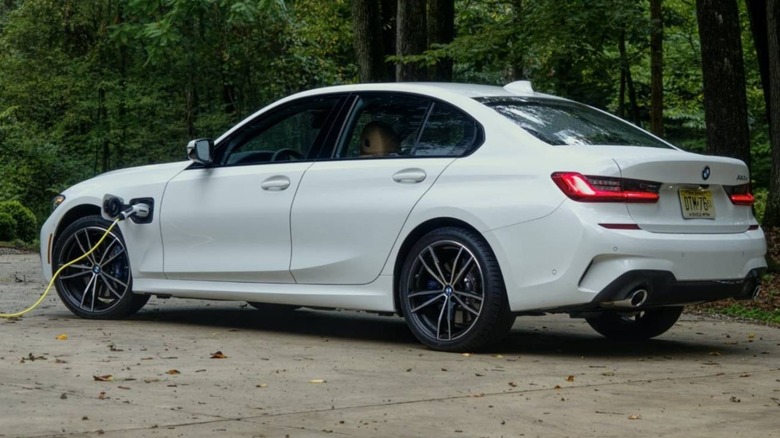2021 BMW 330e Review - No, Really, It's A Plug-In Hybrid
Some electrified cars can't stop shouting about their green credentials, but the 2021 BMW 330e sedan is a little more surreptitious about its plug-in hybrid status. Then again, were I a member of the latest 3 Series family, I'd probably not want my electric drive to potentially overshadow the rest of the features that have long made BMW's compact sedan a best-seller. It's all about balance, and when it comes to going green that can be a tricky thing to judge.
First, the familiar. Take a glance at the 2021 330e and you might struggle to see the differences between it and a non-hybrid version. Same chromed grille at the front – looking, I have to say, positively conservative in both size and shape compared to the snouts of some other recent BMW models – and same handsome rear-wheel drive proportions. Nobody is going to find the latest 3 Series offensive, and whether you see that as an advantage or otherwise depends on how close to design trends you like to skirt.
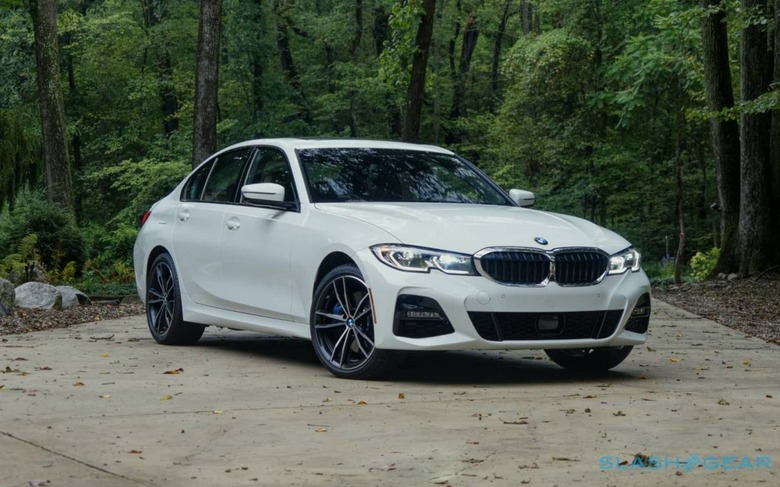
Let's hedge our bets and say that the 330e is likely to age gracefully. There are some lovely details, too, like the glint of blue from the M Sport Brakes and the 19-inch M wheels, but some of them you pay extra for: the upgraded brakes are part of the $1,400 Dynamic Handling Package that also adds Adaptive M Suspension and variable sport steering. The Icon Adaptive LED headlamps with Laserlight, meanwhile, come with the $2,600 Executive Package in which you also find active blind spot monitoring, a head-up display, and a number of other niceties.
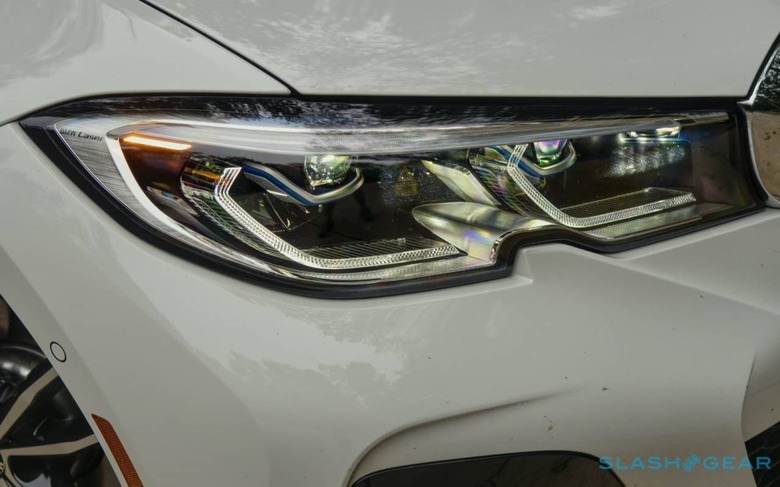
Personally, I'd have liked the headlamps and the blind spot alerts to come standard, given the $44,550 sticker price (plus $995 destination); $2k more gets the 2021 330e xDrive with all-wheel drive. The US federal tax incentive could be worth up to $5,836, though, which saps a little of the sting. All the same, with add-ons and extras, my review car came in at a heady $59,645; the incentive could've knocked that down to under $54k, which is about what a new M340i sedan will cost you.
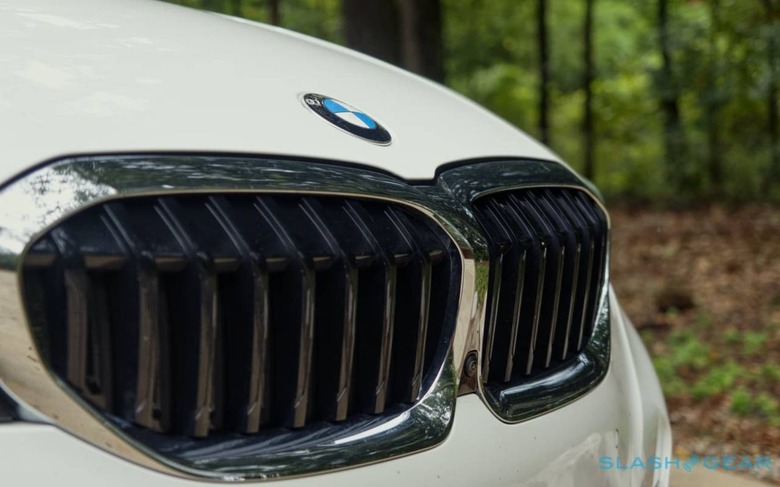
BMW's plug-in hybrid system combines its 2.0-liter TwinPower turbo inline-4 gas engine with an electric motor and an 8-speed Sport Automatic transmission. Total power is 288 hp and 310 lb-ft, with the electric part contributing 107 hp and 77 lb-ft of that. 0-60 mph comes in 5.6 seconds, while top speed is 130 mph (or 142 mph with the optional performance tires).
That adds up to 33 hp and 16 lb-ft more than the non-hybrid 330i, but no change in acceleration. Blame weight for that: the 12 kWh lithium-ion pack tucked behind the rear seats isn't huge in battery terms, but it still helps take the 330e to 4,039 pounds, or not far off 500 pounds more than the gas-only car.
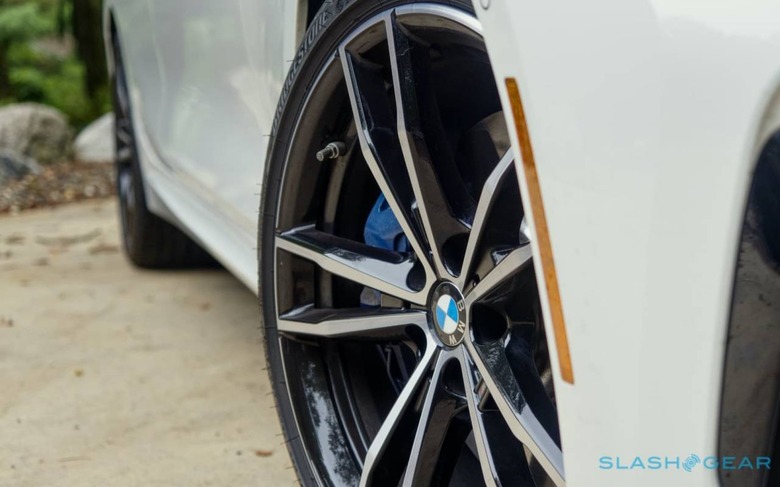
What the 330i can't do, of course, is drive on electric power alone. Nor does the non-hybrid get BMW's overboost feature in Sport mode: kick down fully on the accelerator and the electric motor will add 40 horsepower more, albeit only for 10 second spurts, though impressively it still works even if the battery meter says it's empty. The 330e starts up in Hybrid Auto mode, and the 2021 version taps its bigger battery for significantly more range than the last-generation: 23 miles according to the EPA, compared to just 14. The all-wheel drive model dips slightly, to 20 miles.
Even with the bigger battery, I'm not going to tell you that these are incredible range figures. Luxury plug-in hybrids typically clock in at around the 18-24 mile range on a charge, enough for basic errands around town but nothing more extensive. Most of the time, I found, it made most sense to put the 2021 330e into hybrid mode, and leave the BMW to make its own decisions about whether to use gas, electric, or both while I focused on the road.
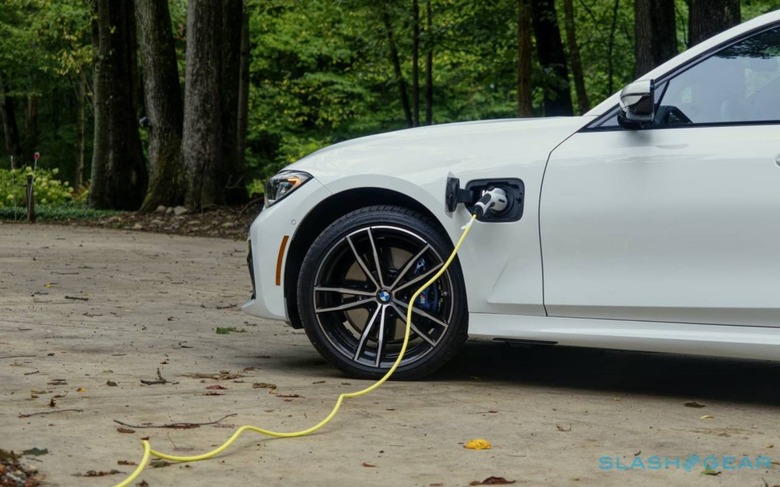
It's markedly more rewarding that way, too. Yes, the 2021 330e can now do 87 mph in pure electric mode, and it pulls away from stop signs and traffic lights with a bright and torquey wheeze, but those looking for The Ultimate Driving Machine probably want the maximum power they've paid for.
I can't blame them, either. The 3 Series is known for its great dynamics, and the 330e doesn't spoil that. Clever power management meant I was never left without an electric shove, and though the steering doesn't feel hugely communicative it's direct and the car responds sharply and predictably. Flick to EV mode and the regenerative braking is more aggressive, too: lift off the accelerator and the 330e slows significantly faster than in the hybrid modes. I do wish BMW would make it easy to change the regen levels regardless of overall drive mode.
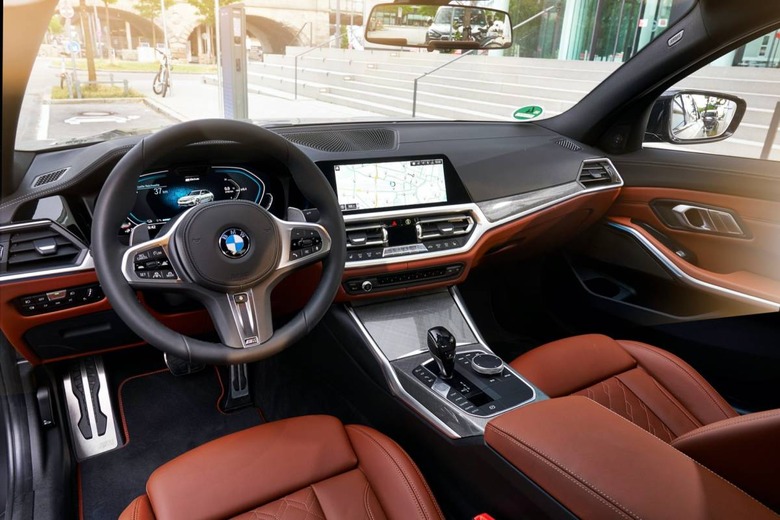
My suspicion is that most 330e drivers won't really be looking to coax the maximum range out of the battery in pure-EV mode. The 23 mile estimate relies on you driving sensibly; I managed high teens without focusing on the battery meter.
That's shown on the standard digital instrument cluster, while the center console gets an 8.8-inch touchscreen for BMW's latest infotainment system. Navigation is standard, along with wireless Apple CarPlay, WiFi hotspot, ambient lighting, and two USB ports. Adaptive cruise control is standard, too, with BMW's Active Driving Assistant Pro – which adds lane-keeping – part of the Executive Package along with heated front seats and a heated steering wheel. $1,700 adds the Extended Traffic Jam Assistant, which allows for hands-off piloting in low-speed congestion on highways, though it's a far cry from the all-speeds hands-off adaptive cruise control that Cadillac Super Cruise and the upcoming Ford Active Drive Assist offer.
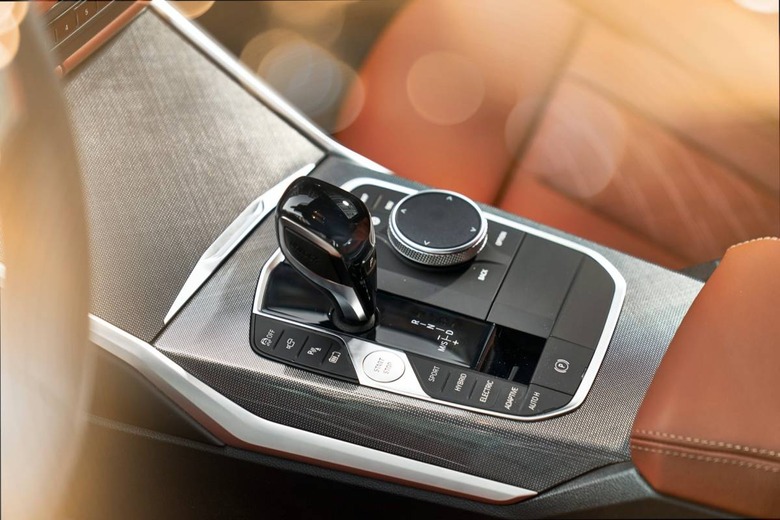
Leatherette seats are standard, which seems miserly; figure on $1,450 for leather. At least the sport seats and handsome ash grey wood trim are standard; it's not exactly a bright cabin, but it's well laid-out and there's no shortage of physical buttons and knobs which many drivers still prefer. If you've been in a recent BMW from the past ten years or so, this will be a familiar space to you. The Executive Package adds BMW's gesture control, which will have you twirling your finger in the direction of the dashboard to tweak the volume or skip tracks, but it still feels like a gimmick.
There are a few other compromises worth taking into account. By focusing on avoiding making the trunk smaller – you get a practical but not lavish 13.2 cu-ft – BMW had to trim the gas tank instead. At 10.6 gallons it's a third smaller than the non-hybrid's tank.
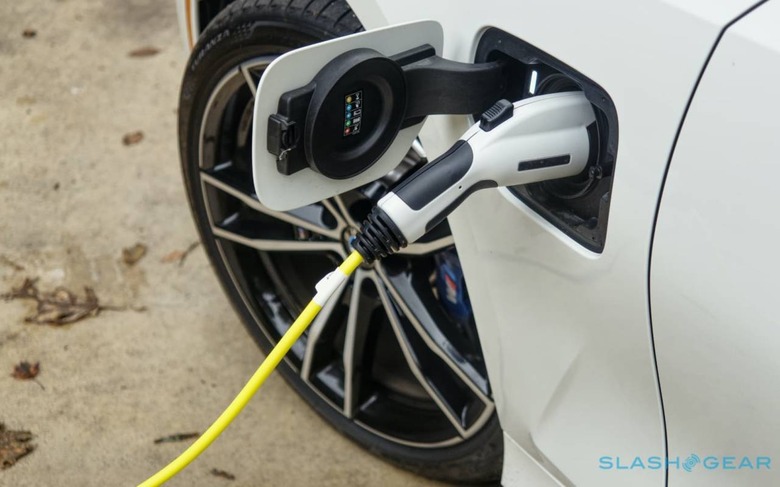
You charge the battery via a new flap on the front fender, just ahead of the driver's door. Behind it there's a standard J1772 port which supports up to 3.7 kW Level 2 charging but not DC fast charging; BMW includes an "occasional use" adapter which plugs into a regular 110V outlet and delivers up to 1.4 kW. Since you can figure on about 10 hours for a full charge from that, getting a Level 2 charger installed at home – which takes about 3 hours – seems like a very sensible idea. Many US energy providers will even help foot the bill for the installation of that, if you're new to PHEV or EV ownership.
2021 BMW 330e PHEV Verdict
With the BMW iNEXT all-electric SUV set to be unveiled, and strong PHEV and EV sales from this year so far, BMW's long-promised push into electrification finally seems to be gathering momentum. Like its predecessor, though, the 2021 330e feels like a hybrid for drivers who aren't really sure they want a plug-in. There simply aren't the common drawbacks, either in terms of how it drives or how livable it is each day, though in return you get a comparatively low electric range.
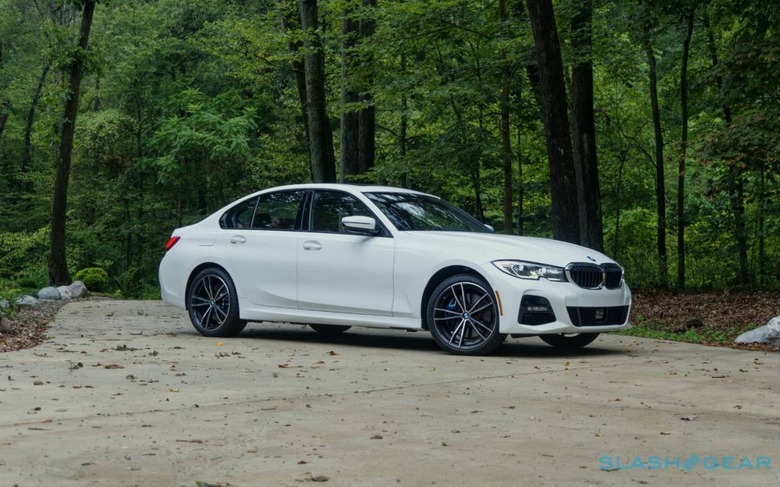
I suspect there's still a considerable audience for that. While EVs may be the future, there are still plenty of people for whom going all-electric simply isn't practical right now. Charge speeds, infrastructure shortcomings, and just plain old range anxiety still exist and are still legitimate hurdles. The 330e offers a taste of the electrified life, but doesn't chain you to it in the process.
Restraint during ordering pays dividends, as does looking into not only federal but state, local-level, and utility subsidies and incentives, which can help temper the inevitable plug-in hybrid premium. The bottom line is that, though seen as transition tech by some, PHEV looks set to continue playing an important role in the shift to EVs. As electric tasters go, the 2021 BMW 330e offers plenty while demanding minimal compromise.
